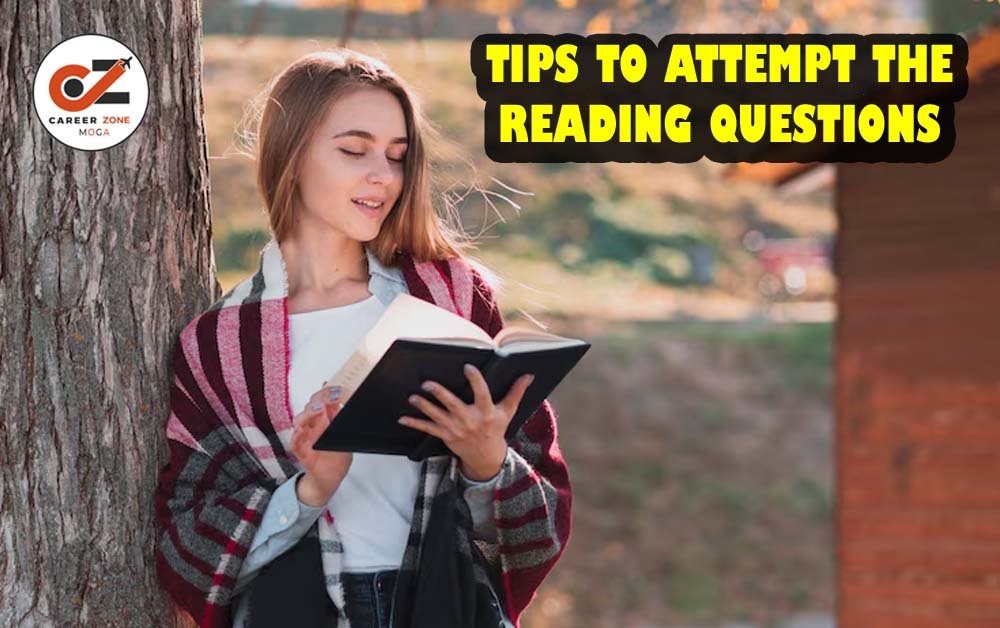
TIPS TO ATTEMPT THE READING QUESTIONS
To score well in the IELTS Reading section, it’s essential to understand the different question types and the most effective methods for answering them within the time constraints. Below is a comprehensive guide that explains how to approach some of the most common question types in the IELTS Reading test:
1. List of Headings
List of Headings is one of the most common types of questions in the IELTS Reading section. Here’s how to approach it:
Read the first 4-5 lines of each paragraph carefully. This portion typically contains the main ideas or themes of the paragraph.
Look for key words in these lines that help identify the paragraph’s focus. These key words can be of three types:
Nouns (e.g., a place, person, or thing)
Verbs (actions or activities)
Adjectives (qualities or characteristics, whether positive or negative)
TIPS TO ATTEMPT THE READING QUESTIONS
Apply this method of identifying keywords to match the paragraph’s content with the headings. If the first 4-5 lines do not clarify which heading fits, read the 6th line (or further if necessary) for additional clues. The heading that contains a synonym of the keywords will likely be the correct answer.
This approach is usually effective, but in some cases, more than one heading might seem appropriate. In such situations, the keyword you find in the subsequent lines should help you narrow it down.
2. Paragraph Matching
In Paragraph Matching questions, you need to determine which paragraph contains the information related to each statement. Here’s how to solve this:
Don’t start at the top of the paragraph. Instead, begin reading from the middle of each paragraph. This is because the beginning of a paragraph usually provides background information, and the answer is more likely to be found further down.
TIPS TO ATTEMPT THE READING QUESTIONS
Focus on matching specific details rather than the general theme. Scan for keywords from the question in the middle or later sections of the paragraph.
Make sure to look for similar ideas or equivalent expressions to match the information with the correct paragraph.
3. Multiple Choice Questions
Multiple choice questions require careful attention to detail. The most effective strategy for these is:
Locate the relevant section of the passage. Use the keywords from the question to find the exact location in the passage.
Once you’ve found the right section, use the process of elimination to discard incorrect options. Often, the answer won’t be straightforward, and one or two options will clearly be wrong.
TIPS TO ATTEMPT THE READING QUESTIONS
Typically, you’ll be left with two options after elimination. At this point, the option that has more synonyms matching the text should be the correct answer.
Avoid overthinking. The best answer is the one that closely matches the meaning of the text.
4. Fill in the Blanks (with Options)
This type of question is often the easiest to attempt, as the answers are provided as options. Here’s how to tackle it:
Don’t read the entire passage. Instead, focus on understanding the sentence where the blank occurs.
Determine the type of word that fits the blank. The missing word could be a noun, verb, or adjective.
TIPS TO ATTEMPT THE READING QUESTIONS
Next, look at the options and choose the word that makes the most sense grammatically and contextually within the sentence. Often, the correct answer will fit the meaning and tone of the passage.
These questions test your ability to understand both the context and the grammar of the passage, so focus on the coherence of the sentence.
5. Fill in the Blanks (without Options) or Complete the Summary
These questions require you to fill in the blanks without provided options, or complete a summary. Here’s the best approach:
Start with the first blank. This will help you determine the context of the sentence or summary.
TIPS TO ATTEMPT THE READING QUESTIONS
The key to solving these questions is to understand the type of word required for each blank. Is it a noun, verb, or adjective? Once you’ve identified this, you can narrow down where to find the answer in the passage.
The rest of the blanks will likely be filled in by reading the section immediately after the first blank, as the answers usually come in sequence.
The key to completing the summary is ensuring that the words you select are consistent with the meaning of the passage and logically fit the summary provided.
TIPS TO ATTEMPT THE READING QUESTIONS
6. True, False, or Not Given (Yes, No, Not Given)
In this question type, you have to decide whether a statement is True, False, or Not Given based on the passage. Here’s a step-by-step approach:
Identify the subject of the statement. If the subject is mentioned in the passage, you’ll be dealing with either a True or False answer.
True: If the statement is exactly or very closely reflected in the passage, it’s likely to be True. The tone or connotation (positive or negative) of adjectives used in the passage and the question will help you determine if they match.
False: If the passage contradicts the statement in any way (especially with adjectives or facts), the answer is False.
TIPS TO ATTEMPT THE READING QUESTIONS
Not Given: If the passage does not mention the subject at all, the answer is Not Given. Pay attention to missing verbs in either the passage or the question. If one or both are absent, the answer is usually Not Given.
By practicing these strategies and understanding the different question types, you can significantly improve your chances of scoring well in the IELTS Reading section. Make sure to manage your time wisely and maintain a steady pace. As with any skill, the more you practice, the more efficient and confident you will become in answering these questions.
TIPS TO ATTEMPT THE READING QUESTIONS

TIPS TO ATTEMPT THE READING QUESTIONS